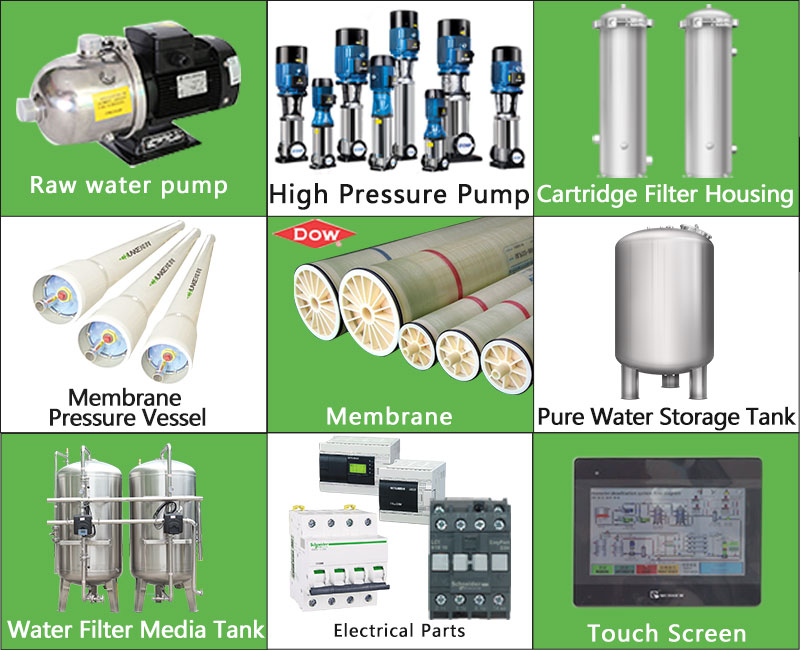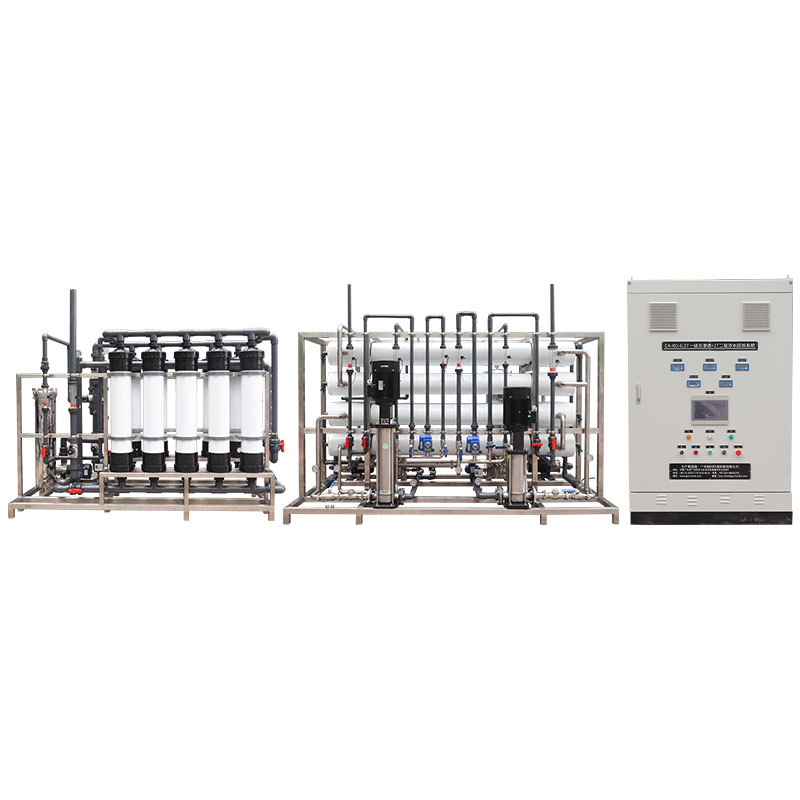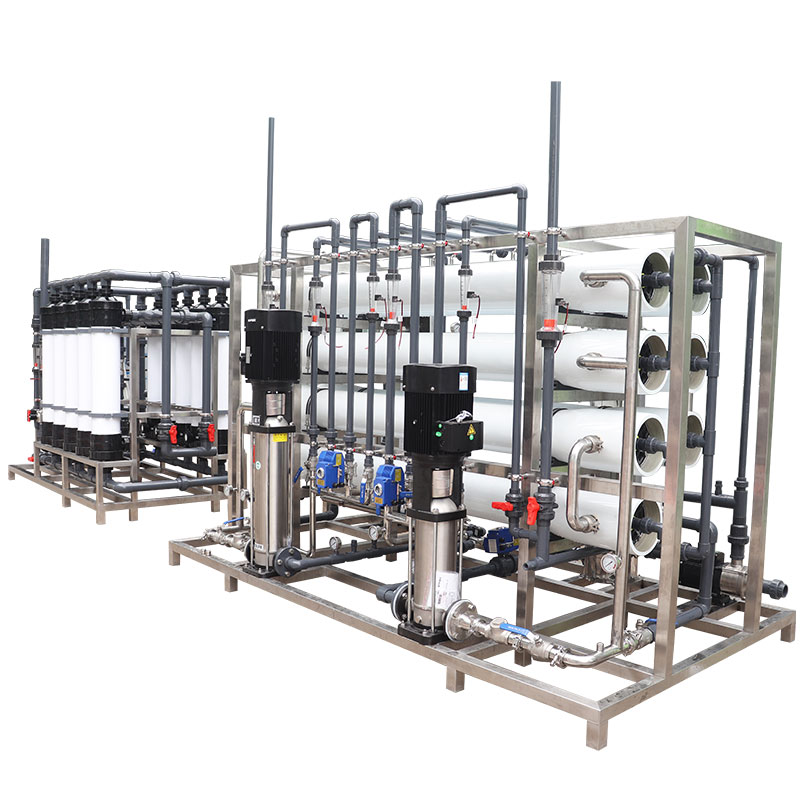Was ist ein kommerzielles Wasserfiltersystem mit UV?
In water treatment technology, ultraviolet (UV) disinfection is an increasingly popular technology. Especially in commercial water filtration systems, UV is widely used as an efficient and chemical-free disinfection method. So, what is a commercial water filtration system with UV? What is the role of UV? At which step of water treatment is it used? This article will explore these issues in detail.

What is a commercial water filtration system with UV?
Commercial water filtration systems are used to provide high-quality drinking water, processing water or process water, and are widely used in industries such as hotels, catering, medical care, pharmaceuticals, and beverage manufacturing. These systems usually include multiple treatment stages to remove suspended matter, organic matter, microorganisms and other contaminants in the water to ensure that the water quality meets industry standards and health and safety requirements.
A commercial water filtration system with UV refers to a traditional water filtration system with a UV disinfection module added. UV disinfection is to kill bacteria, viruses, molds and other pathogenic microorganisms in the water by short-wave ultraviolet rays (usually UVC band, wavelength 200-280 nanometers) emitted by ultraviolet lamps. This disinfection method does not rely on chemicals, so it does not change the taste, smell or color of the water, nor does it produce any harmful byproducts.
What is the role of UV light?
The main role of UV light in water treatment is disinfection, that is, by destroying the DNA and RNA structure of microorganisms, making them lose the ability to reproduce and infect. Specifically, the mechanism of action of UV disinfection is as follows:
1. Destroy the genetic material of microorganisms: UV light forms thymine dimers by photochemically reacting with the DNA and RNA of microorganisms, thereby hindering DNA replication. This damage is fatal because once the DNA cannot replicate normally, the microorganism cannot continue to survive and reproduce.
2. Inhibit microbial activity: In addition to destroying genetic material, UV light can also destroy the enzyme system and cell membrane function of microorganisms, making them inactive. This further ensures that pathogens in the water are completely eliminated.
3. Efficiently kill a variety of pathogens: UV disinfection can effectively kill a variety of pathogens such as bacteria, viruses, molds, algae and parasites in water. Compared with chemical disinfection methods, UV disinfection does not produce drug-resistant pathogens, so it has an important advantage in ensuring water quality safety.

At which step of water treatment is UV disinfection used?
In commercial water filtration systems, UV disinfection is usually arranged in the final stage as part of the terminal disinfection treatment. This is because after the water has been pre-treated in the previous steps (such as sedimentation, filtration, activated carbon adsorption, etc.), the suspended matter, organic matter and most microorganisms in the water have been removed or reduced to a lower level. At this time, the water quality is relatively clear and the UV disinfection effect is the best.
The specific steps are as follows:
Pre-filtration (mechanical filtration)
In the first step of water treatment, the water first passes through a mechanical filter or screen to remove larger suspended matter, sand, soil, rust, etc. This step is mainly to protect the subsequent treatment equipment from clogging and wear. At the same time, this step also creates better conditions for UV disinfection, because the penetration ability of UV rays is closely related to the turbidity of water.
Activated carbon filtration
After mechanical filtration, the water may still contain some organic matter, odor, color, and residual chlorine and other chemicals. At this time, these substances in the water are adsorbed and removed through the activated carbon filter. Activated carbon filtration not only improves the taste and odor of water, but also further reduces the concentration of organic pollutants in the water, laying the foundation for subsequent disinfection treatment.
Softening or reverse osmosis treatment
In some commercial water filtration systems, especially those that need to remove hardness or total dissolved solids (TDS), the water may be softened or reverse osmosis (RO) before entering the UV disinfection. Softening removes hardness ions such as calcium and magnesium from the water by exchanging sodium ions, while reverse osmosis removes dissolved solids and ions from the water through high-pressure membranes. These treatment methods can significantly reduce the concentration of pollutants in the water and improve the effectiveness of UV disinfection.
UV disinfection
In the final step of water treatment, the water after the previous steps is very close to pure state, but it may still contain small amounts of bacteria and viruses. At this time, the water passes through the UV disinfection module, and the short-wave ultraviolet rays emitted by the UV lamp penetrate the water flow and kill the remaining microorganisms. Because the water quality is relatively clear, the ultraviolet rays can efficiently penetrate the water body to ensure the disinfection effect.
The advantage of UV disinfection is that it does not rely on chemicals, so it does not produce any harmful byproducts and does not affect the taste and quality of the water. In addition, UV disinfection can be completed in an instant without contact time, which is faster than chemical disinfection (such as chlorination disinfection).

Composition and operation of UV disinfection system
The core components of UV disinfection system are UV lamps, quartz sleeves, control panels and reaction chambers. Below we will introduce these components and their functions in detail:
UV lamps
The UV lamp is the core component of the UV disinfection system, usually using low-pressure mercury vapor lamps or medium-pressure mercury vapor lamps. Low-pressure lamps usually produce 254 nanometers of ultraviolet wavelength, which is one of the most effective disinfection wavelengths. Medium-pressure lamps can produce a wider band of ultraviolet rays with higher disinfection efficiency.
The service life of UV lamps is usually 9,000 to 12,000 hours. After this time, the UV output of the lamp will gradually decrease, so it needs to be replaced regularly to ensure the disinfection effect.
Quartz sleeve
The quartz sleeve is a transparent tubular material wrapped around the UV lamp to protect the lamp and prevent water from directly contacting the lamp. Quartz material has a high UV transmittance, which ensures that the UV light emitted by the lamp is effectively transmitted to the water. At the same time, the quartz sleeve can also prevent impurities in the water from adhering to the lamp, thereby affecting the disinfection effect.
Quartz sleeves need to be cleaned regularly to prevent the accumulation of scale or biofilm, which will reduce the transmittance of UV light and affect the disinfection effect.
Control Panel
The control panel is used to monitor and control the operating status of the UV disinfection system. It is usually equipped with a UV intensity meter, lamp operation indicator light and an alarm system. When the UV output is lower than the set standard or the lamp fails, the control panel will sound an alarm to remind the user to perform maintenance or replace the lamp.
Reaction Chamber
The reaction chamber is the area where water flows through the UV disinfection. It is usually made of stainless steel and polished inside to increase the reflectivity of UV light and enhance the disinfection effect. When water flows through the reaction chamber, the UV light emitted by the UV lamp will evenly irradiate the entire water body, ensuring that all microorganisms in the water can be effectively disinfected.

What are the limitations of UV disinfection?
Although UV disinfection is widely used in commercial water filtration systems and has many advantages, it also has certain limitations.
1. High water quality requirements: The effect of ultraviolet disinfection is closely related to the transparency of water. If the water contains more suspended matter or high turbidity, the penetration ability of ultraviolet rays will be affected, and the disinfection effect may not be as expected.
2. Unable to remove chemical pollutants: Ultraviolet disinfection is only effective for microorganisms and cannot remove chemical pollutants, heavy metals or organic pollutants in water. Therefore, when these pollutants need to be removed, ultraviolet disinfection must be used in combination with other water treatment technologies.
3. Continuous power supply is required: Ultraviolet lamps need continuous power supply to operate normally. Once there is a power outage or lamp failure, the disinfection function of the system will fail. Therefore, when designing and using ultraviolet disinfection systems, backup power or other emergency measures need to be considered.




